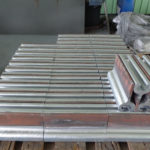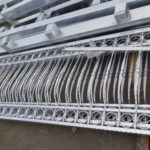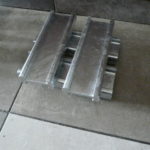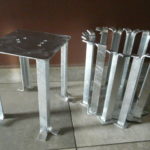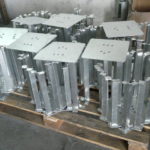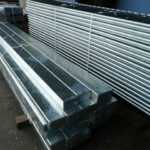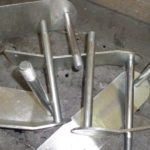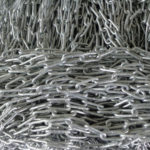Hot-dip galvanizing is a procedure which protects steel and cast iron from rust (corrosion). Hot-dip galvanizing is used for this purpose for over 150 years. The reason for it’s application is in the simplicity of the procedure and creating a hard coating of zinc resistant to mechanical damage which can occur. In case the coating gets damaged, zinc still protects the material and rusts (“it sacrifices itself”).
Hot-dip galvanizing and control are within the HRN EN ISO 1461 and HRN EN ISO 14713-2 standards.
Additional requests regarding the coating thickness must be said before the process of hot tinning, otherwise the service will be done according to ISO 1461 standard.
It’s necessary to prepare the material before hot tinning:
- drill technological holes
- elements mustn’t have any color remains
- welds must be solid and non porous
- material must be adequately constructed
- sandblasting, if necessary
Steel composition affects the quality of hot-dip galvanizing. Silicon, phosphorus, and sulfur ratio in basic material has an important role because certain shares of these elements can cause various outcomes which we can’t affect.
Most common negative consequences happen due to too much silicion, which creates a coarse, thick, gray layer of zinc on material’s surface and has a tendency to peel off (so-called “Sandelin effect”). We do not recommend hot-dip galvanizing of steel which contains silicon between 0,03% and 0,12% or larger than 0,23%.
